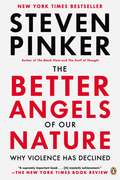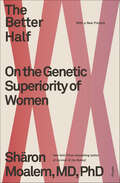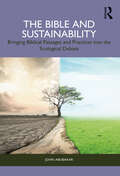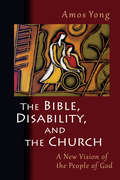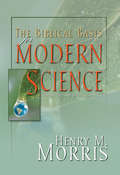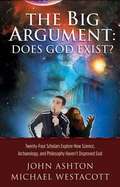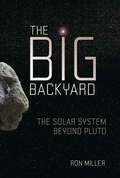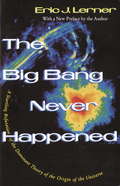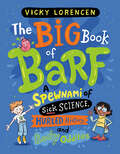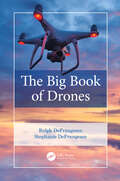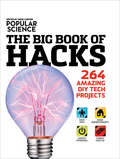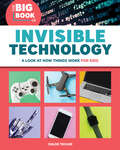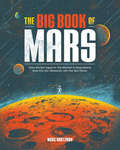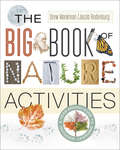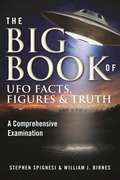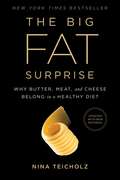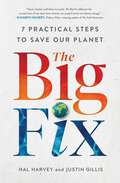- Table View
- List View
The Bet
by Paul SabinIn 1980, the iconoclastic economist Julian Simon challenged celebrity biologist Paul Ehrlich to a bet. Their wager on the future prices of five metals captured the publics imagination as a test of coming prosperity or doom. Ehrlich, author of the landmark book "The Population Bomb, " predicted that rising populations would cause overconsumption, resource scarcity, and famine--with apocalyptic consequences for humanity. Simon optimistically countered that human welfare would flourish thanks to flexible markets, technological change, and our collective ingenuity. Simon and Ehrlichs debate reflected a deepening national conflict over the future of the planet. "The Bet" weaves the two mens lives and ideas together with the eras partisan political clashes over the environment and the role of government. In a lively narrative leading from the dawning environmentalism of the 1960s through the pivotal presidential contest between Jimmy Carter and Ronald Reagan and on into the 1990s, Paul Sabin shows how the fight between Ehrlich and Simon--between environmental fears and free-market confidence--helped create the gulf separating environmentalists and their critics today. Drawing insights from both sides, Sabin argues for using social values, rather than economic or biological absolutes, to guide societys crucial choices relating to climate change, the planets health, and our own.
The Bethe Wavefunction
by Michel GaudinMichel Gaudin's book La fonction d'onde de Bethe is a uniquely influential masterpiece on exactly solvable models of quantum mechanics and statistical physics. Available in English for the first time, this translation brings his classic work to a new generation of graduate students and researchers in physics. It presents a mixture of mathematics interspersed with powerful physical intuition, retaining the author's unmistakably honest tone. The book begins with the Heisenberg spin chain, starting from the coordinate Bethe Ansatz and culminating in a discussion of its thermodynamic properties. Delta-interacting bosons (the Lieb-Liniger model) are then explored, and extended to exactly solvable models associated to a reflection group. After discussing the continuum limit of spin chains, the book covers six- and eight-vertex models in extensive detail, from their lattice definition to their thermodynamics. Later chapters examine advanced topics such as multi-component delta-interacting systems, Gaudin magnets and the Toda chain.
The Better Angels of Our Nature: Why Violence Has Declined (Playaway Adult Nonfiction Ser.)
by Steven PinkerFaced with the ceaseless stream of news about war, crime, and terrorism, one could easily think we live in the most violent age ever seen. Yet as New York Times bestselling author Steven Pinker shows in this startling and engaging new work, just the opposite is true: violence has been diminishing for millennia and we may be living in the most peaceful time in our species's existence. For most of history, war, slavery, infanticide, child abuse, assassinations, pogroms, gruesome punishments, deadly quarrels, and genocide were ordinary features of life. But today, Pinker shows (with the help of more than a hundred graphs and maps) all these forms of violence have dwindled and are widely condemned. How has this happened?<P><P> This groundbreaking book continues Pinker's exploration of the essence of human nature, mixing psychology and history to provide a remarkable picture of an increasingly nonviolent world. The key, he explains, is to understand our intrinsic motives- the inner demons that incline us toward violence and the better angels that steer us away-and how changing circumstances have allowed our better angels to prevail. Exploding fatalist myths about humankind's inherent violence and the curse of modernity, this ambitious and provocative book is sure to be hotly debated in living rooms and the Pentagon alike, and will challenge and change the way we think about our society.<P> Chosen for Mark Zuckerberg's "A Year of Books" <P><b>A New York Times Bestseller</b>
The Better Half: On the Genetic Superiority of Women
by Shäron MoalemA Guardian Book of the WeekLonglisted for the PEN / E. O. Wilson Literary Science Writing AwardAn award-winning physician and scientist makes the game-changing case that genetic females are stronger than males at every stage of lifeHere are some facts: Women live longer than men. They have stronger immune systems. They're better at fighting cancer and surviving famine, and even see the world in a wider variety of colors. They are simply stronger than men at every stage of life. Why is this? And why are we taught the opposite?To find out, Dr. Sharon Moalem drew on his own medical experiences - treating premature babies in the neonatal intensive care unit; recruiting the elderly for neurogenetic studies; tending to HIV-positive orphans in Thailand - and tried to understand why in every instance men were consistently less likely to thrive. The answer, he discovered, lies in our genetics: two X chromosomes offer a powerful survival advantage.With clear, captivating prose that weaves together eye-opening research, case studies, diverse examples ranging from the behavior of honeybees to American pioneers, as well as experiences from his personal life and his own patients, Moalem explains why genetic females triumph over males when it comes to resiliency, intellect, stamina, immunity and much more. He also calls for a reconsideration of our male-centric, one-size-fits-all view of medical studies and even how we prescribe medications - a view that still sees women through the lens of men.Revolutionary and yet utterly convincing, The Better Half will make you see humanity and the survival of our species anew.
The Better to Eat You With: Fear in the Animal World
by Joel BergerCan naive animals avoid extinction when they encounter reintroduced carnivores? To what extent is fear culturally transmitted? And how can a better understanding of current predator-prey behavior help demystify past extinctions and inform future conservation? "The Better to Eat You With" is the chronicle of Berger's search for answers. From Yellowstone's elk and wolves to rhinos living with African lions and moose coexisting with tigers and bears in Asia, Berger tracks cultures of fear in animals across continents and climates, engaging readers with a stimulating combination of natural history, personal experience, and conservation.
The Bible Cure for High Cholesterol
by Don ColbertLower your cholesterol, and feel better naturally. Don't let a diagnosis of high cholesterol scare you. This easy-to-understand book uncovers a dynamically unique strategy for gaining control and living in vibrant, divine health--naturally. Reclaim God's very best for you, and get ready to win! You will: identify cholesterol-busting foods that can dramatically reduce your cholesterol levels; learn how powerful supplements can restore your health; discover what foods sabotage your cholesterol health. You want to be healthy. God wants you to be healthy. At last, here's a source of information that will help you live in health--body, mind and spirit.
The Bible and Sustainability: Bringing Biblical Passages and Practices into the Ecological Debate
by John AbubakarThe Bible and Sustainability addresses the ecological crisis the world is facing, and what the Bible can teach us about sustainable living. Drawing on the interest in the ecological debate generated by Laudato Si, this book attempts to push the discussion beyond intellectual perspectives and help students and researchers apply biblical wisdom to the UN sustainable development goals.It begins with a discussion of what sustainability is, and how people, planet, and profit are affected by unsustainable practices, before exploring four specific biblical practices and their relationship with sustainability: Covenants, the sabbatical year, monastic communities, and the fruit of the spirit. It also discusses the creation account and personalistic nature texts, considering the social relationship that humans have with nature. Finally, it examines an Augustinian perspective on sustainability which encourages sharing, common ownership of property, and living simply. The book concludes by inviting governments, civil society organizations, and academia to bring these biblical practices and passages into the ecological debate.It is an outstanding resource for researchers of the Bible and environment, and Religion and environment more generally.
The Bible, Disability, and the Church: A New Vision of the People of God
by Amos YongInspiring and challenging study that rethinks the Bible’s teaching on disabilityA theologian whose life experience includes growing up alongside a brother with Down syndrome, Amos Yong in this book rereads and reinterprets biblical texts about human disability, arguing that the way we read biblical texts, not the Bible itself, is what causes us to marginalize persons with disabilities. Revealing and examining the underlying stigma of disability that exists even in the church, Yong shows how the Bible offers good news to people of all abilities — and he challenges churches to become more inclusive communities of faith.
The Biblical Basis for Modern Science
by Dr Henry M. MorrisFor decades, Henry Morris has been known as a defender of the Christian faith. It's an auspicious title for such a humble man, yet no one can deny that the grasp Morris has on science and faith issues is staggering. In this updated classic, Morris walks the reader through history "real history" by showing the absurdity of evolution. From a wide variety of sciences, including astronomy, biology, chemistry, physics, and geology, Morris presents clear evidence that the Bible gives us an astonishingly accurate record of the past, present, and future.
The Bickersteth Diaries: 1914-1918
by John Bickersteth Donald CogganThis book is a studiously edited version of the eleven volumes and more than three thousand pages of the diarist's original work. Ella Bickersteth began to put it together for her six sons, because one of them was in Australia at the outbreak of the 1914–18 war.The book reflects upon church and politics, theological musings and matter-of-fact details of how an anxious mother, who was also a busy vicar's wife, kept going through the huge upheaval of war.
The Big Argument
by John Ashton Michael WestacottThe "argument" that readslike a conversation about life! Is there archaeological evidence for the New Testament? Did the universe "hatch" from a "cosmic egg"? What does the fossil record imply about the existence of God? Is design inferred by the existence of information? Since the Enlightenment, spirited debates about the existence of God have captured the public's imagination. Scholars, philosophers, and scientists have grappled with the "evidence" that God exists, or doesn't. Today, some of the world's best minds - in a variety of disciplines - grapple with whether there is any real purpose to our lives. Yet not only do many scientists believe in the God who created us with purpose, they also understand that what we do in the here and now has consequences in the next life. John Ashton has compiled a group of essayists who specialize in fields such as archaeology, astronomy, biblical scholarship, and more. The result is a fascinating exploration of an age-old question, sure to intrigue believers and skeptics alike.
The Big Backyard: The Solar System beyond Pluto
by Ron MillerThousands of years ago, humans believed that Earth was the center of the universe, that the world they lived on was all there was. Truthfully, the solar system extends almost halfway to the nearest star. And it is composed of not only planets, asteroids, and comets, but also powerful forces and vast fields of energy. This is our solar system’s big backyard. The cold, dark world that lies at the farthest reaches of our solar system holds a vast collection of secrets, and for most of human history, we had no idea anything was out there. But, driven by curiosity and equipped with new technology, astronomers have determined that beyond the orbit of Neptune are countless icy comets, strange particles that dance under the influence of the sun, and signs of undiscovered planets. To learn more about these far-flung objects, scientists have finally begun to explore the distant solar system, finding answers to age-old questions at the same time that they encounter new mysteries. With Ron Miller’s incredible illustrations and photographs from NASA probes and telescopes, The Big Backyard takes us on a tour through the solar system’s most obscure neighborhoods and into its darkest corners, to places beyond the limits of the human eye. Miller expertly describes the formation of the solar system and the history of the exploration of the outer solar system before delving into the latest discoveries and missions. Read on to learn what sorts of objects orbit at such extreme distances, what happens at the boundary between the sun’s influence and interstellar space, whether there is such a thing as the mysterious Planet X, and how life on Earth could not exist without the happenings at the edge of the solar system.
The Big Bang Never Happened
by Eric J. LernerA mesmerizing challenge to orthodox cosmology with powerful implications not only for cosmology itself but also for our notions of time, God, and human nature -- with a new Preface addressing the latest developments in the field. Far-ranging and provocative, The Big Bang Never Happened is more than a critique of one of the primary theories of astronomy -- that the universe appeared out of nothingness in a single cataclysmic explosion ten to twenty billion years ago. Drawing on new discoveries in particle physics and thermodynamics as well as on readings in history and philosophy, Eric J. Lerner confronts the values behind the Big Bang theory: the belief that mathematical formulae are superior to empirical observation; that the universe is finite and decaying; and that it could only come into being through some outside force. With inspiring boldness and scientific rigor, he offers a brilliantly orchestrated argument that generates explosive intellectual debate.
The Big Book of Barf: A Spewnami of Sick Science, Hurled History, and Body Oddities
by Vicky LorencenDid you know that there are glasses to prevent motion sickness…Or that astronauts can get &“space sick&”…This hilarious and wacky illustrated book is jam-packed with silly facts, crazy activities, and even recipes (Barf-day cake, anyone?) that will have you learning all about the fascinating world of barf, our bodies, and beyond.Yes, barf is gross. But...it also kind of tells us a lot about how our bodies work? Whether it&’s that saliva protects your teeth from vomit or that your stomach can hold 4 quarts of food and liquid…Vomit is the revolting, disgusting, slimy, gooey but also hurl-arious fabric that holds us together!The Big Book of Barf is perfect the curious science-loving kids who love to digest (and then regurgitate) cool and crazy facts. This colorful and engaging book is filled with myths and history about vomit, humorous health hacks to keep your food down, facts about your digestive system, activities for home, jokes, and more! All this gastronomic gargle-gravy goodness will entertain and inform young readers whether at home, in school, or especially [cough, gag, heave] in the bathroom.
The Big Book of Drones
by Ralph DeFrangesco Stephanie DeFrangescoDrones are taking the world by storm. The technology and laws governing them change faster than we can keep up with. The Big Book of Drones covers everything from drone law to laws on privacy, discussing the history and evolution of drones to where we are today. If you are new to piloting, it also covers how to fly a drone including a pre-flight checklist. For those who are interested in taking drones to the next level, we discuss how to build your own using a 3D printer as well as many challenging projects for your drone. For the truly advanced, The Big Book of Drones discusses how to hack a drone. This includes how to perform a replay attack, denial of service attack, and how to detect a drone and take it down. Finally, the book also covers drone forensics. This is a new field of study, but one that is steadily growing and will be an essential area of inquiry as drones become more prevalent.
The Big Book of Hacks: 264 Amazing DIY Tech Projects (Popular Science)
by Doug CantorIngenious (and hilarious) projects that aspiring makers will love, brought to you by the tinkerers at Popular Science magazine. From useful, doable gadgets to outlandish contraptions that you&’d likely be wise to avoid, this showcase of ingenuity is an entertaining tribute to the inventive spirit. In this book from the science and technology magazine that&’s been inspiring everyday people for nearly 150 years, you&’ll discover: Geek Toys: Be the life of any party with rad gaming hacks, amazing pyrotechnics, quirky DIY robots, wow-inducing projectiles, and lots of ways to make beer even better. Home Improvements: Pimp out your pad with a laser-security system, an improvised sous-vide cooker, and a life-sized cardboard display of anyone you want. Gadget Upgrades: Want to stash a flash drive in an old cassette? Use a DIY stylus on a touchscreen? Improvise a fisheye lens for your camera? With this book, you can. Things That Go: Give your motorbike a Tron vibe, deck out your car with an action-figure hood ornament, and keep gadgets charged on the go with a solar-powered backpack. …and much more!
The Big Book of Invisible Technology: A Look At How Things Work For Kids
by Chloe TaylorLearn to see how modern technology is all around us—a hands-on approach for kids 8 to 12 Bluetooth brings beautiful music to your ears—but how, exactly? Using technology and building with technology are two different skill sets—and a twenty-first-century kid will need to understand both. The Big Book of Invisible Technology offers ways to explore how things work for kids in fun, hands-on ways. From the invisible Internet to driverless cars and drones, this book shows you how things work for kids, using step-by-step experiments. Then apply your knowledge and learn how you may, one day, bring real and important change to our lives. Are you ready to solve some of Earth's biggest challenges with technology? The future needs you. In this book on how things work for kids you'll discover: Talk like a pro—Important tech-related words are highlighted in bold along with their definitions, in a virtual dictionary of how things work for kids. Hands-on—Nine applied experiments will inspire you to learn while doing—like taking apart and safely rebuilding an old keyboard or remote control. Think bigger—Discover how to brainstorm as you plan ways to positively influence our planet. Take a step toward being the next great scientist, engineer, or tech genius when you learn how things work for kids.
The Big Book of Mars: From Ancient Egypt to The Martian, A Deep-Space Dive into Our Obsession with the Red Planet
by Marc HartzmanFilled with entertaining history, archival images, pop culture ephemera, and interviews with NASA scientists, The Big Book of Mars is the most comprehensive look at our relationship with Mars—yesterday, today, and tomorrow.Mars has been a source of fascination and speculation ever since the Ancient Sumerians observed its blood-red hue and named it for their god of war and plague. But it wasn't until 1877, when "canals" were observed on the surface of the Red Planet, suggesting the presence of water, that scientists, novelists, filmmakers, and entrepreneurs became obsessed with the question of whether there's life on Mars. In The War of the Worlds, H.G. Wells suggested that we wouldn't need to make contact with Martians—they'd come for us—while, many years later, Nikola Tesla claimed that he did make contact. Since then, Mars has fully invaded pop culture. It has its own day of the week (Tuesday, or martis in Latin), candy bar, and iconic Looney Tunes character. It has been the subject of novels and movies, from Ray Bradbury's The Martian Chronicles to Mars Attacks! to The Martian. And it has sparked a space-race feud between Elon Musk and Jeff Bezos, who both hope to send a manned mission to Mars in the near future.
The Big Book of Nature Activities: A Year-Round Guide to Outdoor Learning
by Jacob Rodenburg Drew MonkmanThe average child can identify over one thousand corporate logos, but only ten native plants or animals--a telling indictment of our modern disconnection from nature. Soaring levels of obesity, high rates of ADHD, feelings of stress and social awkwardness, and "Nature Deficit Disorder" are further unintended consequences of a childhood spent primarily indoors.The Big Book of Nature Activities is a comprehensive guide for parents and educators to help youth of all ages explore, appreciate and connect with the natural world. This rich, fully illustrated compendium features: Nature-based skills and activities such as species identification, photography, journaling, and the judicious use of digital technology Ideas, games, and activities grounded in what's happening in nature each season Core concepts that promote environmental literacy, such as climate change and the mechanisms and wonder of evolution, explained using a child-friendly, engaging approach Lists of key species and happenings to observe throughout the year across most of North AmericaPerfect for families, educators, and youth leaders , The Big Book of Nature Activities is packed with crafts, stories, information and inspiration to make outdoor learning fun.Jacob Rodenburg is the Executive Director of the Camp Kawartha summer camp and outdoor education centre. As well as publishing numerous articles on children, nature and the environment, he has worked in the field of outdoor education for twenty-five years.Drew Monkman is an award-winning environmental advocate, naturalist, and retired teacher. In addition to his weekly nature column, Drew is the author of two season-based nature guides, including Nature's Year.
The Big Book of UFO Facts, Figures & Truth: A Comprehensive Examination
by William J. Birnes Stephen SpignesiIn a mothership full of entertaining and informative chapters, authors Stephen Spignesi and William Birnes, writers of many books dealing with the intriguing, weird, and unexplained, shed a revealing beam of light on the UFO phenomenon. From inexplicable cattle mutilations and modern astronauts who have seen UFOs, to close encounters of the third and fourth kind, and, it’s all here: The latest on Roswell, and the 1947 crash that has never been explainedThe weirdest (and most convincing) alien abductions—and the medical procedures performed on abducteesThe most commonly-seen UFO shapesA who's who of UFOlogy—including presidents that have seen UFOsUFOs and the Bible20 years of Project Blue Book mysteries—NASA’s official UFO investigationWeirdness galore—Men in Black, crop circles, Bigfoot, the face on Mars, Hollow Earth Theory, alien ancestry, and more!The Big Book of UFO Facts, Figures & Truth is at once a valuable reference and an engrossing guide for all those fascinated with unexplained phenomenon. Turning to any page at random, readers are sure to find new facts and information, as well as dozens of rare, irrefutable photos. In addition, readers will learn how they can access a special website which includes actual video evidence of UFOs. This just may be the most comprehensive UFO guide available.
The Big Book on Small Heat Shock Proteins
by Robert M. Tanguay Lawrence E. HightowerBased upon a workshop entitled "The Small HSP World" held in Québec 2-5 October 2014. Twenty-five scientists provided chapters for the book. The chapters are from the best scientists currently working in this field. These colleagues include Arrigo, Benesch, Benjamin, Buchner-Haslbeck-Weinkauf, Benndorf, Boelens, Carra, Chang, Currie, Ecroyd, Emanuelsson, Fu, Garrido, Golenhofen, Gusev, Hightower, Kampinga, Lavoie, MacRae, Quinlan, Tanguay, Vierling, Vigh, Weeks and Wu. Briefly, the book starts with the structure of small heat shock proteins, moving to their functions and finishing with their involvement in diseases. Although this is quite broad, the structural aspect will be the unifying theme of the book.
The Big Dipper (Let's-read-and-find-out Science 1 Ser.)
by Franklyn M. BranleyExplains basic facts about the Big Dipper, including which stars make up the constellation, how its position changes in the sky, and how it points to the North Star.
The Big Fat Surprise: Why Butter, Meat and Cheese Belong in a Healthy Diet
by Nina TeicholzA New York Times bestseller Named one of The Economist's Books of the Year 2014 Named one of The Wall Street Journal's Top Ten Best Nonfiction Books of 2014 Kirkus Reviews Best Nonfiction Books of 2014 Forbes's Most Memorable Healthcare Book of 2014 In The Big Fat Surprise, investigative journalist Nina Teicholz reveals the unthinkable: that everything we thought we knew about dietary fat is wrong. She documents how the low-fat nutrition advice of the past sixty years has amounted to a vast uncontrolled experiment on the entire population, with disastrous consequences for our health.For decades, we have been told that the best possible diet involves cutting back on fat, especially saturated fat, and that if we are not getting healthier or thinner it must be because we are not trying hard enough. But what if the low-fat diet is itself the problem? What if the very foods we've been denying ourselves--the creamy cheeses, the sizzling steaks--are themselves the key to reversing the epidemics of obesity, diabetes, and heart disease? In this captivating, vibrant, and convincing narrative, based on a nine-year-long investigation, Teicholz shows how the misinformation about saturated fats took hold in the scientific community and the public imagination, and how recent findings have overturned these beliefs. She explains why the Mediterranean Diet is not the healthiest, and how we might be replacing trans fats with something even worse. This startling history demonstrates how nutrition science has gotten it so wrong: how overzealous researchers, through a combination of ego, bias, and premature institutional consensus, have allowed dangerous misrepresentations to become dietary dogma. With eye-opening scientific rigor, The Big Fat Surprise upends the conventional wisdom about all fats with the groundbreaking claim that more, not less, dietary fat--including saturated fat--is what leads to better health and wellness. Science shows that we have been needlessly avoiding meat, cheese, whole milk, and eggs for decades and that we can now, guilt-free, welcome these delicious foods back into our lives.
The Big Fix: Seven Practical Steps to Save Our Planet
by Hal Harvey Justin GillisAn engaging, accessible citizen&’s guide to the seven urgent changes that will really make a difference for our climate—and how we can hold our governments accountable for putting these plans into action.Dozens of kids in Montgomery County, Maryland, agitated until their school board committed to electric school buses. Mothers in Colorado turned up in front of an obscure state panel to fight for clean air. If you think the only thing you can do to combat climate change is to install a smart thermostat or cook plant-based burgers, you&’re thinking too small. That&’s where The Big Fix comes in, offering everyday citizens a guide to the seven essential changes our communities must enact to bring our greenhouse gas emissions down to zero—and sharing stories of people who are making those changes reality. Energy policy advisor Hal Harvey and longtime New York Times reporter Justin Gillis hone in on the seven areas where ambitious but eminently practical changes will have the greatest effect: electricity production, transportation, buildings, industry, urbanization, use of land, and investment in promising new green technologies. In a lively, jargon-free style, the pair illuminate how our political economy really works, revealing who decides everything from what kind of power plants to build to how efficient cars must be before they&’re allowed on the road to how much insulation a new house requires—and how we can insert ourselves into all these decisions to ensure that the most climate-conscious choices are being made. At once pragmatic and inspiring, The Big Fix is an indispensable action plan for citizens looking to drive our country&’s greenhouse gas emissions down to zero—and save our climate.


